15 Nights / 16 Days
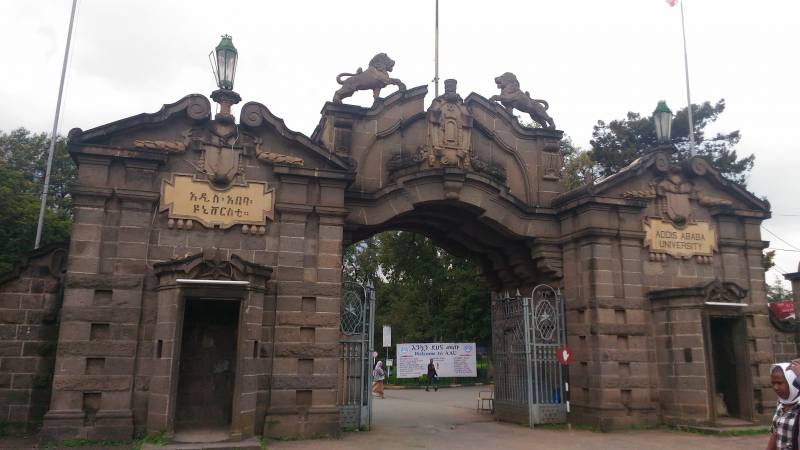
Ethiopia Regularly Hits the Top of the List of Favourite African Birding Destinations. the Entire Country is Dripping with Birds and One Cannot Fail to Enjoy the Myriad of Bright Species, Special Mammals, Spectacular Scenery, Superb Coffee and Wonderfully Friendly People — Not to Mention that the Birding is Relatively Very Easy and that There are So Many Endemics and Specials On Offer. this Tour of the “roof of Africa” Racked Up Over 550 Bird Species, Countless Great Mammals .
to Find Some of the Most Sought-after Endemics, Including the Fabled Prince Ruspoli’s Turaco, the Range-restricted Stresemann’s Bush-crow, the Rarely Seen White-winged Collared-dove and Salvadori’s (juba) Weaver, We Will Venture to Rarely-visited Remote Corners of this Ancient Land. There is also a Five-day Extension to Look for the Final Four Endemics: Harwood’s Francolin and Ankober, Yellow-rumped and Yellow-throated Serins, So It Will Be Possible to See all of the Ethiopian Endemics During this Comprehensive Tour
On arrival at Addis Ababa Bole International Airport you will be met and transferred to your hotel. After a rest and refresh at the hotel, we head north to the Sululta Plains. These high-altitude plateau grasslands provide superb birding, despite intensive cultivation. Resident birds we may find here include the endemics Blue-winged Goose, Wattled Ibis, White-collared Pigeon, Erlanger’s Lark and the aptly-named Thick-billed Raven. We will also see White-backed and Lappet-faced Vultures, Lammergeier, Banded Martin, Cape Crow, Groundscraper Thrush (endemic race simensis), African Black Duck and Red-breasted Wheatear. Suddenly, the seemingly endless plain dramatically drops off into the Blue Nile drainage system. Perched on the edge of the gorge is Debre Libanos Monastery, one of Ethiopia’s most sacred Christian sites. We will search here for R¼ppell’s Griffon, Verreaux’s Eagle, African Hawk-eagle, Augur Buzzard (dark-morph birds are commonly seen here), Lanner Falcon, Nyanza Swift, Red-rumped Swallow, Mocking Cliff-chat and two endemics: R¼ppell’s Chat and White-billed Starling. Another speciality of this area is Lion-headed Baboon. In the afternoon we will return to Addis Ababa, where we will spend the night.
After an early start we will descend into the Great Rift Valley and make our first birding stop at Debre Zeit Crater Lake. The woodlands surrounding the lake teem with birds and we will look for flocks of approachable Black-winged Lovebirds, Blue-breasted Bee-eater, Black-billed Barbet, Rufous-necked Wryneck, R¼ppell’s Robin-chat, Black-headed Batis, Beautiful Sunbird and R¼ppell’s Weaver. We will also visit Koka Dam and Lakes Gelila and Zeway. Here we will search for Pink-backed and Great White Pelicans, Black Crowned-crane, Intermediate Egret, African Darter, Goliath Heron, Hamerkop, Yellow-billed and Saddle-billed Storks, Spur-winged and Egyptian Geese, Comb Duck, African Pygmy-goose, Red-billed, White-backed and Yellow-billed Ducks, Hottentot Teal, Fulvous Whistling-duck, African Fish-eagle, African and Lesser Jacanas, Senegal Thick-knee, Spur-winged Lapwing, Pied, African Pygmy and Malachite Kingfishers and Winding Cisticola, and also enjoy a picnic lunch. We will spend the night at Awassa.
Before breakfast we will explore our wooded hotel grounds. Amongst our targets will be African Mourning Dove, Woodland Kingfisher, Silvery-cheeked Hornbill, Double-toothed Barbet, Red-shouldered Cuckoo-shrike, Spotted Creeper, Brown-throated Wattle-e
We will spend the day exploring our hotel gardens and nearby forests. Species we may find include several endemics: Yellow-fronted Parrot, Abyssinian Woodpecker, Brown Saw-wing (antinorii race of Black Saw-wing), Dark-headed Oriole, Abyssinian Slaty-
Today we will head for the world-famous Bale Mountains National Park. On the ascent we will start to see flocks of Abyssinian Siskins and Yellow-crowned Canaries feeding on the short grass and many Red-billed Choughs. Just before we reached Dinsho wetlands we will stop for Cape Eagle-owl in a rocky ravine. On the plain nearby there will be groups of Black-winged Lapwings together with many Thekla Larks and Red-throated Pipits. At our picnic spot we will watch out for the endemic Spot-breasted Lapwing and Rouget’s Rail while nearby we will look for another endemic: Abyssinian Longclaw. We should also see Fan-tailed Widowbird, Winding (Ethiopian) Cisticola, African Stonechat and Buffy Pipit in the same area. At the park headquarters, we will search for Chestnut-naped Francolin together with two more endemics: Abyssinian Catbird and White-backed Black-tit. We will also hope to see a variety of mammals including Mountain Nyala, Menelik’s Bushbuck and Desert Warthog. The park wardens may know of roosting sites for Abyssinian Owl, African Wood-owl and Abyssinian Nightjar.
A 1600m descent will find us enjoying some dry warmth in the Sof Omar region. The habitat here consists of broad-leaved and Acacia woodlands, which hold many new species for us. Our main target bird will be the extremely range-restricted Salvadori’s Serin, the most attractive of Ethiopia’s endemic canaries. Other target birds will include D’Arnaud’s Barbet, Somali Crow, Northern Brownbul, Somali Tit, the localised Brown-tailed Chat, Yellow-breasted Apalis (a form likely to be split as Brown-tailed Apalis), Rosy-patched Bushshrike, Black-crowned Tchagra, Pearl-spotted Owlet, Greater Honeyguide, Striped, Grey-headed and Half-collared Kingfishers, Marico Sunbird and the impressive Bristle-crowned Starling. Other likely birds include Crested Francolin, Kori Bustard, Bruce’s Green-pigeon, Ring-necked and Namaqua Doves, Emerald-spotted Wood-dove, Orange-bellied Parrot, White-bellied Go-away-bird, Black-billed Woodhoopoe, Von der Decken’s and Northern Red-billed Hornbills, Black-throated Barbet, Cardinal Woodpecker, Grey Wren-warbler, Northern Crombec, Rufous Chatterer, Brubru, White Helmetshrike, Superb Starling, White-headed Buffalo-weaver, Speke’s Weaver, the local subspecies of Red-headed Weaver, Eastern Paradise-whydah, Straw-tailed Whydah, Village Indigobird, Red-cheeked Cordonbleu, Cut-throat, and Reichenow’s Seedeater. Sof Omar boasts Ethiopia’s longest cave system and we will have the option to take time out from our busy birding schedule, hire a guide and wander through some of these impressive tunnels with underground waterways and roosting Horseshoe Bats.
During our ascent of the Bale Mountain massif onto the Sanetti Plateau, which lies between 3800m and 4377m above sea level, we will enter a Tid, or Juniper forest zone, where we will search for African Goshawk, Rufous-chested Sparrowhawk, African Hill Babbler, Cinnamon Bracken-warbler, Yellow-bellied Waxbill and the difficult Abyssinian Crimsonwing. Once we reach the unique plateau we will be driving on Africa’s highest road, passing close to the summit of Ethiopia’s second-highest mountain. The habitat is termed ‘Afro-alpine moorland’ and is characterised by Jibrra or Giant Lobelias, which tower over the rich tussock grasslands. This site is an Important Bird Area of immense significance, supporting seven globally-threatened bird species and nearly all of Ethiopia’s highland biome species. If we are very fortunate we will see a pair of endangered Wattled Cranes striding through the moist grassland. We will also search for Ruddy Shelduck, Black Stork and Moorland Francolin, while Moorland Chat is hard to miss! The grasslands are estimated to support an amazing biomass of 4000kg of rodents per hectare. This obviously attracts raptors, and we should see Golden, Steppe and Tawny Eagles together with Pallid Harriers hunting over this green sea. They share the abundant food source with the plateau’s most celebrated resident, Ethiopian (Simien) Wolf, the world’s rarest canid. Finally, we will reach the escarpment of this elevated plateau and stare down through the clouds at the vast Harenna Forest below. This is the largest intact forest block in Ethiopia and the largest protected Afro-alpine forest on the continent. It still supports Lions and the only surviving forest-dwelling African Wild Dogs. Here we will search for the uncommon Mountain Buzzard, Rameron Pigeon, African Emerald Cuckoo, Narina Trogon, Brown Warbler (an endemic subspecies to this National Park — Bale Parisoma) and the virtually endemic African Citril. In the afternoon we will return to Goba across the Sanetti Plateau.
An early start is required to reach the dry thorn savannah in the remote southern part of Ethiopia. We will head up over the Sanetti Plateau again, giving us an opportunity to look for species we may have missed, then drop down to the amazing Harenna Forest, where we will make opportunistic stops and also take a lunch break. We may see mixed flocks of Bronze and Black-and-white Mannikins hanging on the grass by the road. Later, as we reach Acacia forest, we are likely to see Red-and-yellow Barbet, Abyssinian Ground-hornbill, Grey Kestrel, Wahlberg’s and Martial Eagles, Spotted Morning-thrush, Stout Cisticola and Shelley’s Starling. In the afternoon we will reach a dry wadi on the Genale River, home to Ethiopia’s most sought-after endemic, Prince Ruspoli’s Turaco. We should enjoy excellent views of this very unusual and beautiful bird. New for us in the area will be Bearded Woodpecker, Grosbeak Weaver and Sulphur-breasted Bush-shrike. In the late afternoon we will arrive in Negele, where we will spend two nights.
East of Negele lies the Liben Plains, the only place in the world to find Liben Lark. We will walk across the plains in search of this special bird, which we will hope to watch performing its parachute display flight. We should also find Pectoral-patch Cisticola, Long-billed Pipit, Crowned Lapwing and the range-restricted Somali Short-toed Lark. Ethiopian Swallow is common here as are White-crowned Starling and Shelley’s Rufous Sparrow. The surrounding dry woodland and thorn savannah support Egyptian Vulture, Bateleur, African Harrier-hawk, Eastern Chanting-goshawk, Diederik Cuckoo, Abyssinian Scimitarbill, Eastern Yellow-billed Hornbill, Red-and-yellow Barbet, the rare and enigmatic Gillett’s Lark, Dodson’s Bulbul, Boran Cisticola, Golden-breasted Starling, African Grey and Pale Flycatchers, Mouse-coloured Penduline-tit, Slate-coloured Boubou, Northern White-crowned Shrike, White-winged Widowbird, Crimson-rumped Waxbill and Somali Bunting. If we are lucky, we may see Salt’s and G¼nther’s Dikdiks, while Anubis Baboons may also be encountered.
After passing close to the Kenyan border we will finally reach the Yabello region, home to two of Ethiopia’s most sought-after endemic birds, both listed as globally-threatened: Stresemann’s Bush-crow and White-tailed Swallow. This area of Acacia savannah is characterised by giant red termite mounds, some towering 5m above the plains, and both of these birds seem to be associated with these marvels of natural architecture. We will also have a good chance of seeing flocks of Vulturine Guineafowl feeding by the road, Yellow-necked Spurfowl, Levaillant’s and Pied Cuckoos, Steel-blue Whydah and Vitelline Masked-weaver. The late morning will be spent walking along the Dawa River in search of the extremely localised White-winged Collared-dove, Juba Weaver and Black-bellied Sunbird. We may also see Grant’s and Thomson’s Gazelles and Gerenuk. Two nights will be spent in Yabelo.
A walk before breakfast should give us a closer look at Stresemann’s Bush-crow and we are also likely to see Bare-faced Go-away-bird, Croaking Cisticola and Rock Hyraxes waiting for the sun on the top of the rocks. We will spend a full day exploring this bird-rich area. In addition to the two special endemics we will look for Ostrich, Gabar Goshawk, Pygmy Falcon, Somali Courser, Mottled Swift, Grey-headed and Pygmy Batis, Blue-naped Mousebird, Pale Prinia, Rufous-crowned and Lilac-breasted Rollers, Golden and Bush Pipits, Pringle’s Puffback, Red-naped Bush-shrike, Taita Fiscal, Yellow-bellied Eremomela, Kenya Violet-backed, Hunter’s and Shining Sunbirds, Somali Crombec, Banded Warbler, Purple Grenadier, Three-streaked Tchagra, Wattled Starling, Yellow-spotted Petronia, Chestnut Sparrow, Northern Grosbeak-canary, Grey-headed and Black-capped Social-weavers, Chestnut Weaver, Black-cheeked Waxbill, Green-winged Pytilia and White-bellied Canary. In the evening we will make a local excursion to look for Donaldson-Smith’s Nightjar and Three-banded Courser.
Following some early-morning birding around the hotel we will head north towards Addis Ababa. After lunch in Awassa we will travel along Awassa Lake shore, where we may see the endemic Fawn-breasted Waxbill and have a reasonable chance of seeing Basra Reed-warbler. In the late afternoon we will arrive at Lake Langano for two-night stay on the shores of the lake with views of the 4000m Arsi Mountains in the background. In the evening we will look for Greyish and Verreaux’s Eagle-owls, African Scops-owl, Northern White-faced Owl and Freckled, Slender-tailed and Sombre Nightjars around our hotel.
The three neighbouring lakes in the central Ethiopian Rift Valley are totally different from each other but all are superb birding sites. The morning will be spent around the vast hotel grounds, where we will look for Clapperton’s Francolin, White-winged Black-tit, Hemprich’s Hornbill, Little Bee-eater, Little Rock-thrush, Abyssinian (Schalow’s) Wheatear and many other special birds of the area. The afternoon’s destination will be the magnificent Bishangary area, where we will look for Narina Trogon, Lemon and Tambourine Doves, African Emerald Cuckoo, Red-fronted Tinkerbird, Ethiopian Boubou (race aethiopicus of Tropical Boubou), Black Cuckoo-shrike, Black Scimitarbill, Cape Teal, Southern Pochard, Intermediate Egret, Dark Chanting-goshawk, Imperial and Long-crested Eagles, Black-chested and Banded Snake-eagles, Kittlitz’s Plover, African Snipe, Pallas’s Gull, African Pipit, African Thrush, Red-faced Crombec, R¼ppell’s Long-tailed Starling and Red-billed Oxpecker. Mammals may include Oribi and Spotted Hyena.
After further early-morning birding around Lake Langano we will head to Awash National Park. The route will take us through savannah habitat and close to numerous Rift Valley Lakes with great birding. As we skirt around the lava fields at the base of the Fantale Crater, we will look for Sombre Rock-chat, Blackstart and Chestnut-headed Sparrow-lark. In the late afternoon we will arrive at the park entrance where we are likely to see Abyssinian Roller, Ashy Cisticola and Green-winged Pytilia. We will stay in Awash for two nights.
Today will be spent in the superb Awash National Park, specifically around the Bilen and Fulhowa Hotsprings, the Awash River and the Kirayawa Gorge, exploring riverine forests, wetlands, thorn woodlands, savannah grasslands, rocky hills, cliffs and escarpments. The park boasts a bird list of 460 species and we will look for Greater Spotted Eagle, Scissor-tailed Kite, Shikra, Arabian, Buff-crested, Hartlaub’s and White-bellied Bustards, Three-banded Courser, Helmeted Guineafowl, Small Buttonquail, Eastern Grey Plantain-eater, Chestnut-bellied and Lichtenstein’s Sandgrouse, Black-billed Barbet, White-browed Coucal, African Palm-swift, Plain Nightjar, Northern Carmine and Madagascar Bee-eaters, Wire-tailed Swallow, Red-winged and Flappet Larks, Singing Bushlark, Red-backed Scrub-robin, Eastern Olivaceous Warbler, Southern Grey, Isabelline, Red-backed, White-rumped and Woodchat Shrikes, Somali Fiscal, Nile Valley, Shining and Marico Sunbirds, Grey-headed and Sulphur-breasted Bush-shrikes, Fan-tailed Raven, African Pied Wagtail, Red-billed Quelea and Crimson-rumped Waxbill. Mammals may include Lion, Leopard, Beisa Oryx, Aardvark, Soemmering’s Gazelle, Impala, Hamadryas Baboon, Abyssinian Hare, African Wild Cat, Black-backed Jackal, Striped Hyena and Greater and Lesser Kudu
Some early morning birding around the lodge will be followed by the return journey to Addis Ababa . We will have another opportunity to look for Sombre Rock-chat in the lava fields of the Fantale Crater before stopping for lunch en-route. Upon reaching Addis Ababa you will have time to shower and change before dinner, following which you will return to the airport for yout late evening flight back to your country. Those taking the optional extension will spend the night in Addis Ababa.
End of the Tour and Departure
We are Dealing in Tour & Travels Services. Read More...
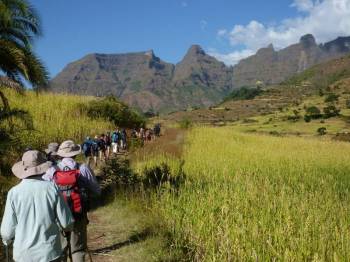 15D/14N
15D/14N
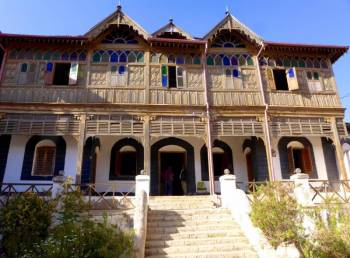 3D/2N
3D/2N
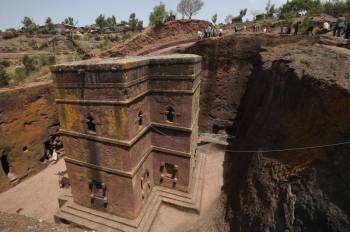 3D/2N
3D/2N
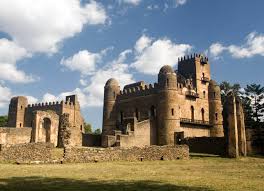 6D/5N
6D/5N
 2D/1N
2D/1N
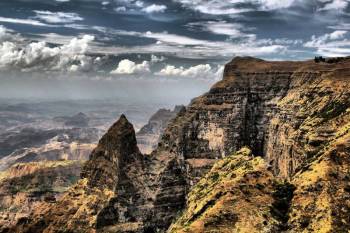 6D/5N
6D/5N
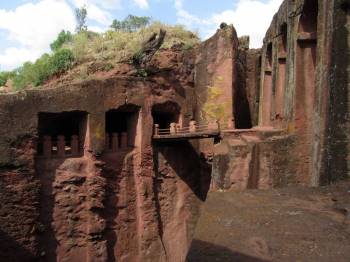 4D/3N
4D/3N
 8D/7N
8D/7N
 10D/9N
10D/9N
 16D/15N
16D/15N
New Delhi - Bikaner - Jaisalmer - Jodhpur - Ranakpur - Jaipur - Agra - Mandawa - Ti..
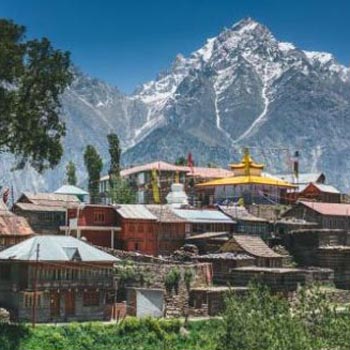 16D/15N
16D/15N
Shimla,Kinnaur,Manali,Amritsar Romantic ..
Shimla - Kinnaur - Manali - Amritsar
 16D/15N
16D/15N
Bikaner - Jodhpur - Jaisalmer - Mount Abu - Chittorgarh - Pushkar - Ajmer - Jaipur ..
 16D/15N
16D/15N
Golden Triangle with Yoga Meditation Tour
New Delhi - Agra - Jaipur - Rishikesh - Haridwar
 16D/15N
16D/15N
16 Days North & South India Tour
Agra - Jaipur - Bangalore - Periyar - Mumbai - Mahabaleshwar
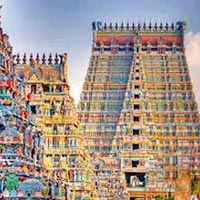 16D/15N
16D/15N
Mumbai - Goa City - Belgaum - Bagalkot - Badami - Hassan - Mysore - Bangalore - Hos..
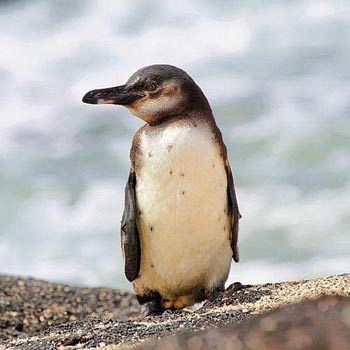 16D/15N
16D/15N
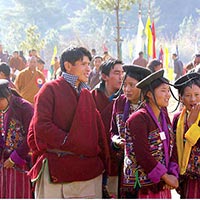 16D/15N
16D/15N
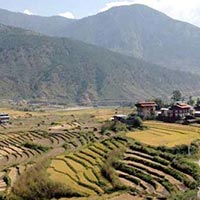 16D/15N
16D/15N
 15D/14N
15D/14N
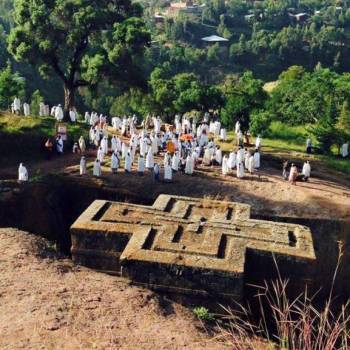 8D/7N
8D/7N
Addis Ababa - Axum - lalibela - Gondar - Bahirdar - Hawzen - wukro - mekele
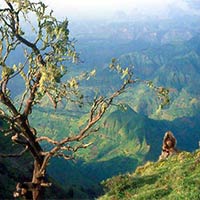 12D/11N
12D/11N
 8D/7N
8D/7N
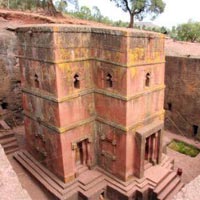 13D/12N
13D/12N
Bahir Dar - Axum - Adigrat - Addis Ababa - Gonder - Mekele
 6D/5N
6D/5N
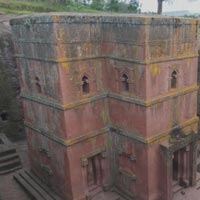 4D/3N
4D/3N
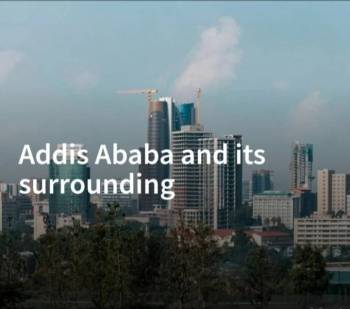 8 Hours
8 Hours
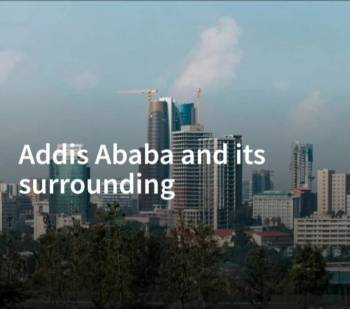 8 Hours
8 Hours